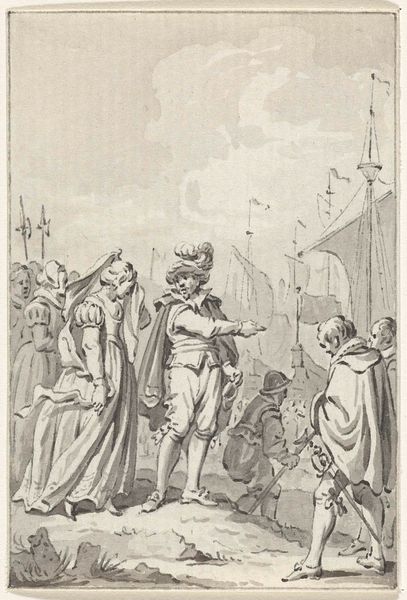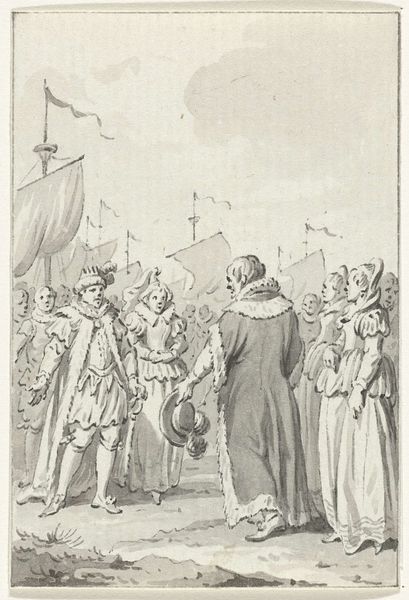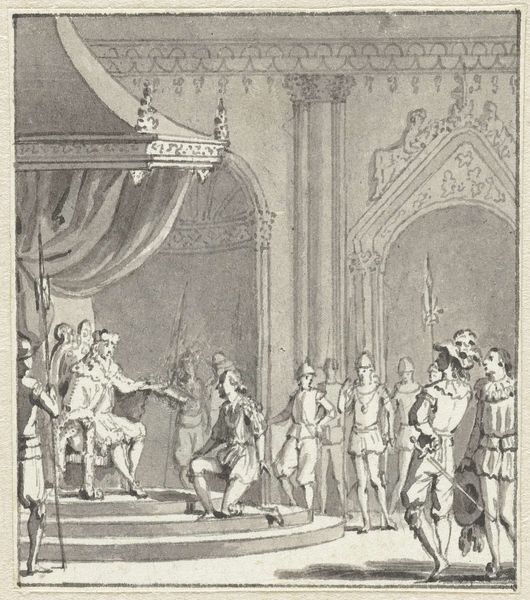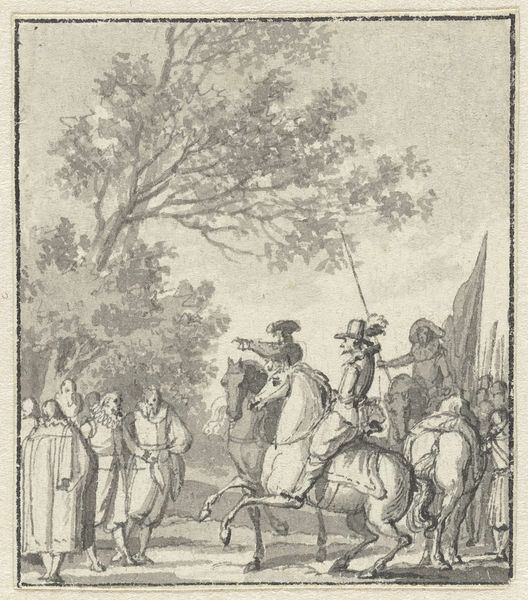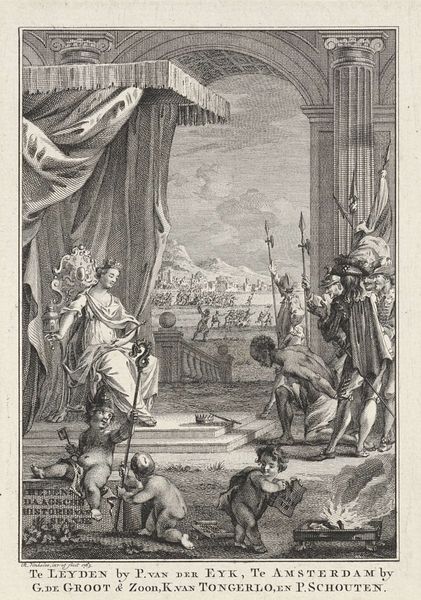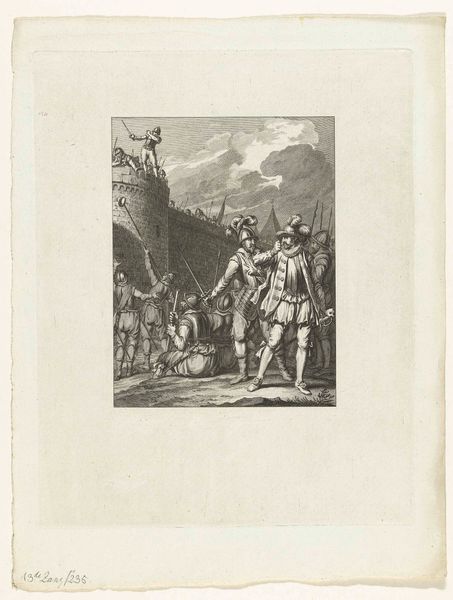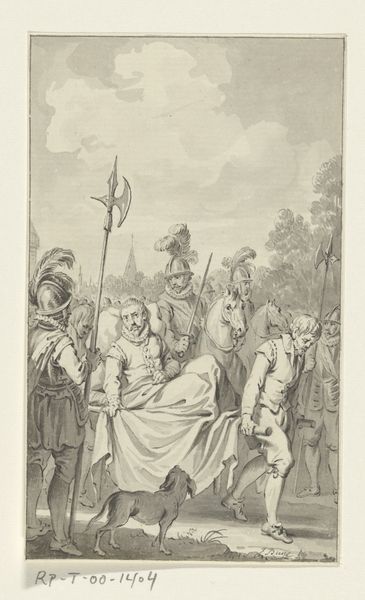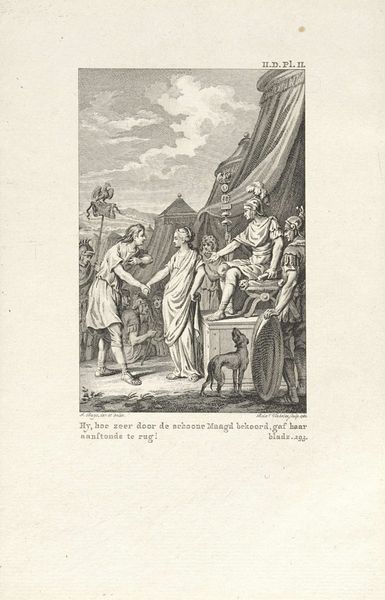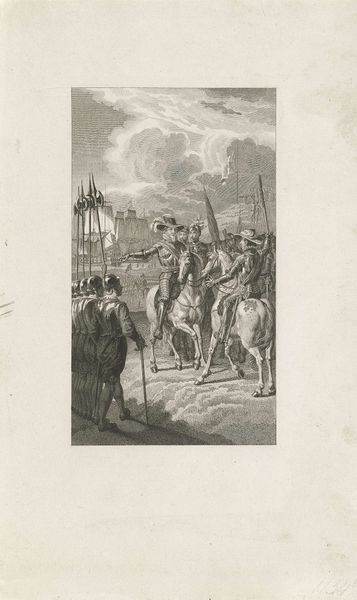
drawing, watercolor, ink
#
drawing
#
medieval
#
narrative-art
#
figuration
#
watercolor
#
ink
#
genre-painting
#
history-painting
#
realism
Dimensions: height 65 mm, width 55 mm
Copyright: Rijks Museum: Open Domain
Editor: This ink and watercolor drawing, titled "In 't Jaar 1138," was created around 1789-1810 by an anonymous artist. The scene depicts a gathering of people with a kneeling figure before what appears to be a bishop. It gives off a sense of formal ceremony and… solemnity? What symbolic weight would you say the bishop, and that crozier he's holding, are carrying in this image? Curator: The crozier is interesting, isn’t it? We can see that symbol as more than just an indicator of religious authority; consider what it represents across time – spiritual guidance, but also, in many eras, temporal power. It plants the church firmly within events of 1138. What feelings does it stir in *you* to see this blending of church and state? Editor: It does feel very intentional, placing the church at the center of historical events. Almost like the church *is* history. What do you make of the kneeling figure, in contrast to the standing crowd? Curator: Absolutely! This moment captures something powerful about societal structures. Who is allowed to stand, and who is forced to kneel? And consider the garments worn; they are signifiers of class and status, just as the posture is one of submission. Note also, how those details can evoke a sense of cultural memory; prompting reflection on societal roles. Is the drawing then, in your view, offering a celebration, or critique, of established hierarchies? Editor: I think... more of a critique? The somber tones and that single, submissive figure definitely lean that way. It really does highlight how symbols can reflect complicated social and political power dynamics! Curator: Indeed. And how those power dynamics resonate through generations via imagery. Something to keep in mind as we move through art history. Editor: Definitely something to remember. I'll be looking at those visual cues with fresh eyes now.
Comments
No comments
Be the first to comment and join the conversation on the ultimate creative platform.
